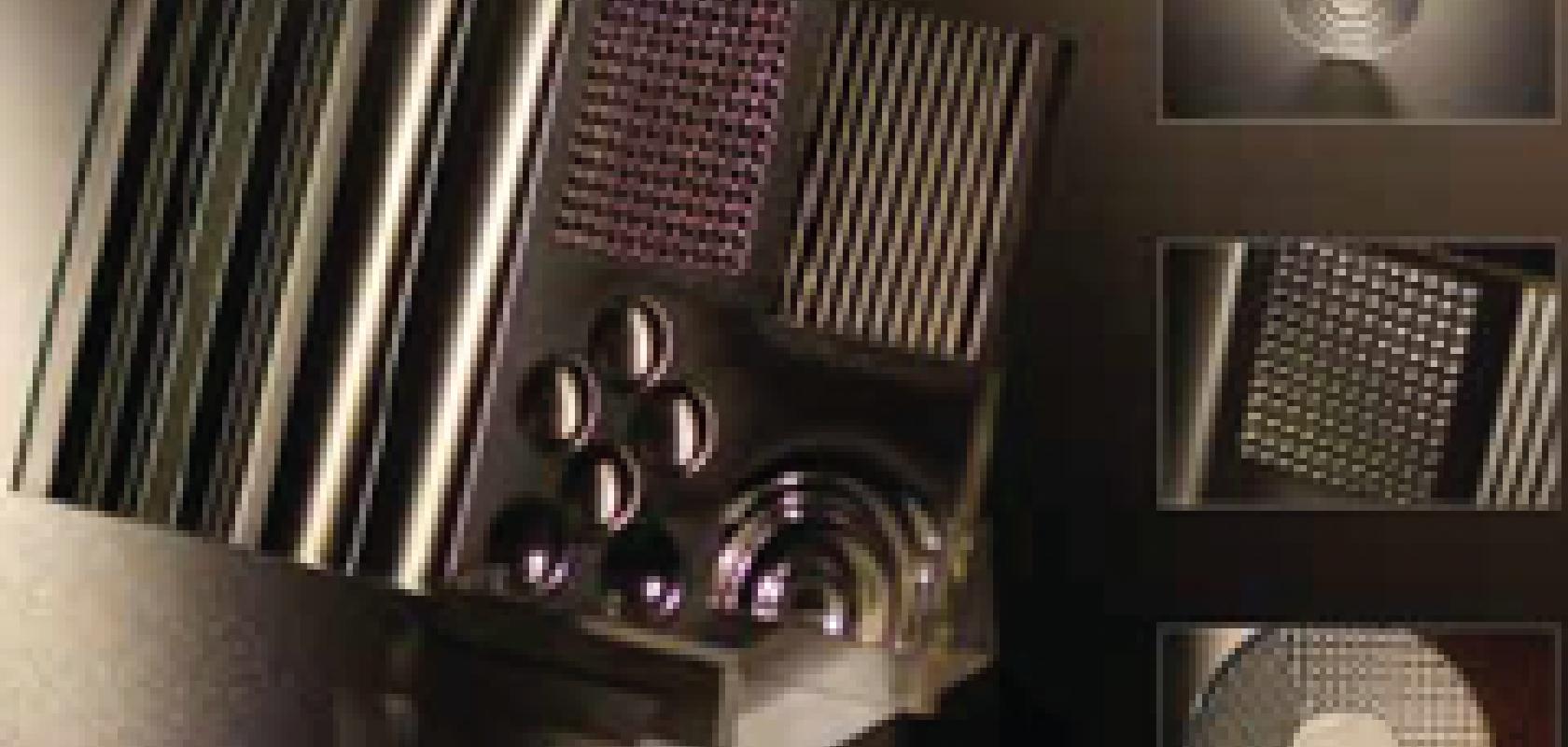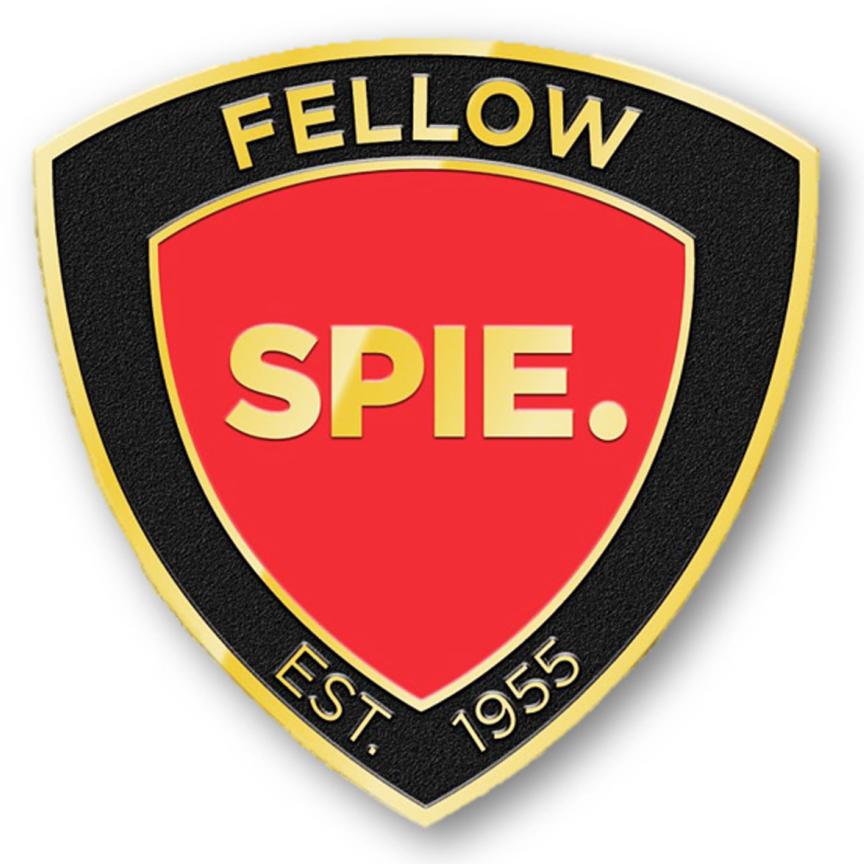At Optatec in Frankfurt in May, Dutch firm Luxexcel was showing samples of its plastic optics. This might not seem that unusual at an optics fair, but these lenses were remarkable in that they were made with 3D printing.
The idea of building up a part additively layer by layer rather than reductively is something that has had a degree of success for mechanical parts, but not so far for optics. ‘The surface quality requirement for optics, especially for visible wavelengths, is very difficult to meet using 3D printing,’ said Jyrki Saarinen, a professor at the Institute of Photonics, University of Eastern Finland and director of the European Optical Society.
‘To reach imaging quality, you need to have 5nm rms surface roughness. That’s almost impossible with most of the 3D printing technologies that build components from layers or small dots.’
Luxexcel’s 3D printed lenses are not quite imaging quality yet, according to Richard van de Vrie, CEO of the company – although he says work is ongoing to reach this level – but they are suitable for illumination, which is the area the company is targeting at the moment.
Luxexcel uses a custom inkjet printer to print optical, UV-curable PMMA materials. The machines deposit micro drops of acrylic onto a substrate that is then hardened with UV light. The optical structure, specified in a CAD file, is achieved by jetting, flowing and merging the molten droplets before hardening.
The company produced its first samples last year and is now focusing on illumination optics mainly for the LED lighting industry. The optics for LEDs are currently made by injection moulding, the moulds for which, according to van de Vrie, are expensive. High-production volumes of 50,000 pieces or more are needed to make the process cost-effective.
‘In my previous company we manufactured for Philips and other lighting OEMs,’ he said. ‘We ended up with a €700,000 to €1 million pre-investment only in optics.’ He added that, as soon as the product changes from, for instance, 50 lumens per Watt to 80 lumens per Watt, the optics have to change.
He said: ‘We regularly had to write off the whole inventory [because of product changes]; we had to restart the whole process from forecasting making moulds, and that’s continuously happening in the LED lighting industry.
‘This industry is not able to customise the light distribution,’ he added. ‘We accept round LED spot bulbs to light a square painting; we accept that half of the light from streetlights shines into house windows instead of onto the street. There are now possibilities to customise applications and projects, even for single products.’
Additive manufacturing has not been an option for making optics for LEDs, because the surface is not smooth enough and it’s not feasible to polish thousands of different lenses for the types of volume required. Luxexcel’s technology changes that.
But it’s not just LED illumination where 3D printed optics would have advantages; any kind of device prototyping would benefit from the fast turnaround times possible with printing lenses.
Generally, it’s complicated to simulate a light source accurately because of the large number of variables involved, which means, to test a design fully, prototypes have to be made. ‘It’s a big thing if your prototyping time is a day or an hour compared to weeks,’ commented Saarinen.
‘That’s so dramatic and will have an impact in many areas where optics are used.
‘When developing technology, the problem is how to get started – especially if you don’t know the risks of volume manufacturing. If the only possibility is to use more expensive grinding and polishing or injection moulding, then this makes commercialisation more difficult. So many good projects didn’t get off the ground because of the lack of low-cost optical production methods for lower volumes. I hope 3D printed optics will open possibilities for many start-ups or lower-volume projects.’
Luxexcel has had interest from other areas outside of LED illumination for its lenses, including the big eyewear companies. ‘We are sure that, with our technology, we will be able to reach the required surface roughness where we can just scan the eye and print eyeglass lenses tailored to the individual,’ said van de Vrie.
The company has several printers and has recently invested in a new manufacturing printer. The process is competitive with injection moulding for up to 10,000 pieces, says van de Vrie, and can print around 200 to 500 pieces per hour, depending on the height and volume. It’s also good for small volumes for prototyping and for producing freeform lenses.
Van de Vrie gave his vision for the future for this 3D printing process: ‘For the optics industry, the aim is to design an optic and have the optic two days later at your desk. Prior to this there was no possibility to customise optics for lighting, because no-one would have bought a mould for low volumes. With our process, we can offer new, affordable solutions to do this.’ There is also potential in the future to build optics in different ways to include functions inside the component.
In addition, since the process is digital, it is much easier to scale up a project. ‘It’s digital, so your optical inventory becomes your computer file,’ said van de Vrie.
‘Companies don’t need to put a lot of different optics on their inventories any more – they just order what they need. That saves a lot of investment.’ Luxexcel is aiming to set up an online platform for ordering 3D printed optics, so designers have more freedom in developing optical systems.
The process is not quite at the quality for imaging applications, but it is getting close, according to Saarinen. Luxexcel’s lenses were analysed by Brobbey Kofi Jocelyn, a masters student at the University of Eastern Finland as part of his thesis – and while he doesn’t have repeatability results, he did run detailed surface roughness measurements.
‘We measured 6nm rms for surface roughness [of Luxexcel’s optics] when point defects were excluded, and it’s generally considered that 5nm rms is the limit for imaging lenses,’ commented Saarinen. ‘So, they are very close to the imaging lens quality and that’s a very positive surprise,’ although he added that surface roughness was around 15nm with point defects.
Saarinen commented that, without 3D printing in optics, his fear was that engineers would start moving away from using optics and photonics to prototyping with electronics and mechanics, where there is a 3D printing option.
‘Having that same 3D printing technology for optics is very important, as well as opening up new possibilities,’ he said.


